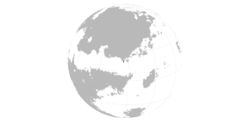Difference between revisions of "Archive:Shroziq"
| Line 212: | Line 212: | ||
==See also== | ==See also== | ||
[[Dead countries]] | [[Category:Dead countries]] | ||
Revision as of 01:29, 6 April 2019
 | This article or section is out of date. A country/countries relevant to this article have been removed from Sahar and have been retconned. Not everything here may still be considered canonical. This page was last edited by Severy (talk | contribs) 5 years ago. (Update) |
| Republic of Shroziq |
||||
|---|---|---|---|---|
|
||||
Locator maps
|
||||
Equirrectangular zoomed locator
|
||||
| Capital and | Sossij | |||
| Official languages | Something Tiengic | |||
| Recognised regional languages | Some other stuff | |||
| Bureaucratic Language | Shohuanese | |||
| Demonym | Shroziqi | |||
| Government | Unitary Presidential Repuplic | |||
| - | President | |||
| - | Vice President | |||
| - | The Senate | |||
| Legislature | The Senatorial Chamber | |||
| Independence from Shohuanese colonial occupation in 1971 | ||||
| - | First Shohuanese trade outpost | 1831 | ||
| - | Formal annexation of Shroziq | 1834 | ||
| Area | ||||
| - | 20,239 km2 7,814 sq mi |
|||
| Population | ||||
| - | 2016 estimate | 20 202 772 | ||
| - | Density | 998.21/km2 2,585.4/sq mi |
||
Shroziq (Language: Country [IPA]), officially the Republic of Shroziq, is a country located in a small peninsula in southern Parshita, bordering Atlia to the west and Curanezan and Tsagon to the north. It was a Shohuanese colony for almost 140 years and still bears cultural and political connections with Shohuan. It is mostly comprised of single urban centre, Sossij, with over 18 million inhabitants in extended metro area, and less developed dependencies. Shroziq, Sossij especially, is rather developed and is the biggest single financial and logistic center east of Vaniu, to a globally major level.
Etymology
History
Colonial Period
The first Shohuanese trade outpost in the area was settled in 1831, meant as an entrepost for exploration and commerce into Milevia and Lahan. Parshita was, both historically and particularly in that period, profoundly fragmented, and the local ruler, Prince XXX asked for Shohuanese assistance to win local power disputes. Prince XXX then fell into profound debt and dependency of shohuanese resources and his reign was formally annexed to Shohuan in 1834. Throughout the colonial period, Sossij was an important trade hub and natural port, vital to Shohuanese power projection to the east.
Independent Shroziq
In the aftermath of the GEW, the shohuanese government installed cuts on colonial spending and started a policy of gradual emancipation of it's colonial reaches, for Shroziq, this policy culminated in peaceful independence in 1971. After the independence, Shroziq established itself economically with extended entrepôt trade and investment in infrastructure, growing very fast for several decades. At the moment of independence, most residents of Shroziq were foreign born and the government has made many efforts to establish a Shroziqi Identity.
Geography
Geology
Climate
Shroziq is entirely situated in an area of Tropical Monsoon (Am) climate, being hot throughout the year, with distinct, if not incredibly pronounced, wet and dry seasons.
Biodiversity
Politics
Shroziq is ruled by a democratically elected President, with executive powers, a democratically elected Senatorial Chamber presided by The Senate, which is a title held by a single person, with legislative powers, and a Judiciary appointed by the President.
The political climate in Shroziq is peculiar, with a multi-party system, that has been historically ruled by a Balko-Sannist coalition, focused on the formation and preservation of material and intellectual Shroziqi identity and culture and economically anti-protectionist policies crystallized by the Shroziqi model of entrepôt trade.
Government
Administrative divisions
Foreign relations
Shroziq has no trade embargoes, and displays FTA agreements with several nations, which allows them to exercise re-exportation policies with deeply embargoed states. Shroziq has been historically tied to the Shohuanese sphere of influence and wary of constitutionally pashaist nations, such as neighboring Czisilia.
Military
Economy
Transport
Energy
Science and technology
Tourism
Demographics
Ethnic groups
Urbanisation
Shroziq is a highly urbanized state, with over 93% of the population residing in urban settlements, most of them, accounting for about ninety percent of the total population, in the Sossij Metro area.
Language
There are several official languages in Shroziq. WIP
Education
Healthcare
Religion
Pauegism is the most common religion in Shroziq, although non-negligible pashaist, iidreist, uródist and parshitan indigenous minorities exist.


